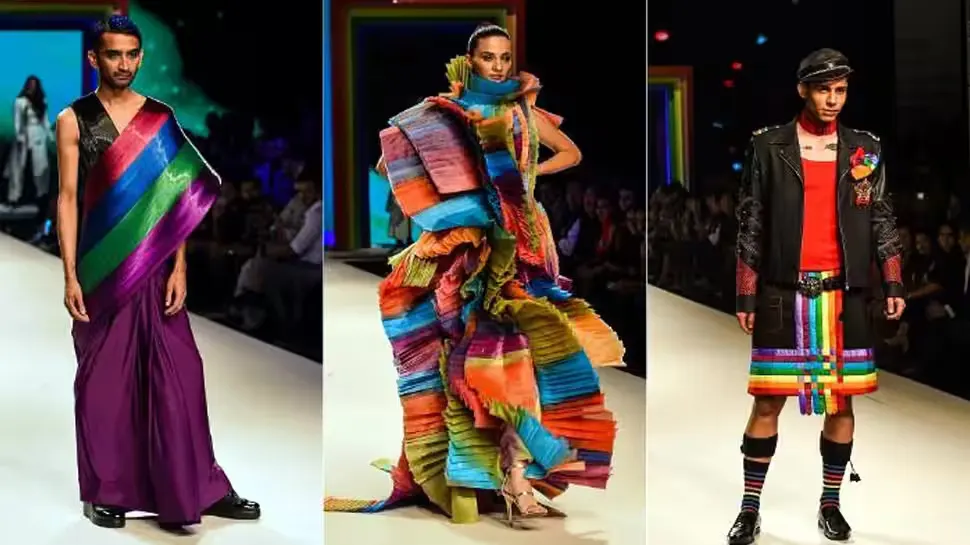Discover Pandipedia
Pandipedia is the world's first encyclopaedia of machine generated content approved by humans. You can contribute by simply searching and clicking/tapping on "Add To Pandipedia" in the answer you like. Learn More
Expand the world's knowledge as you search and help others. Go you!

A delta is a type of wetland that forms at the mouth of a river as it empties into a larger body of water, such as an ocean, lake, or another river. This process occurs when the river's flow slows down, allowing sediment carried downstream to settle and accumulate, creating new landforms. Deltas are characterized by their nutrient-rich sediments, which support diverse ecosystems and agriculture[2][4].
Deltas can be divided into two main parts: the subaqueous part, which is underwater and contains fine sediment, and the subaerial part, which is above water and influenced by both waves and river flow[2][4]. The formation of a delta is a gradual process that involves the interplay of various factors, including the speed of the river, the presence of waves, and tides[4].
In addition to their environmental significance, deltas are important for human settlements and agriculture, providing fertile land and supporting millions of people[3][5]. Examples of well-known deltas include the Nile Delta and the Mississippi River Delta, both of which are heavily influenced by the flow of their respective rivers and the surrounding geographical features[2][4].
Let's look at alternatives:
- Modify the query.
- Start a new thread.
- Remove sources (if manually added).
- Request a manual search from our human research team.

Fashion is often viewed as more than just a means of covering one's body; it acts as a profound form of self-expression that reflects individual identity, moods, values, and social contexts. This multifaceted relationship between fashion and self-expression highlights the psychological impact of clothing choices and their significance in conveying one's personality and aspirations.
Fashion as a Reflection of Identity

Clothing choices serve as powerful indicators of personal beliefs, cultural backgrounds, and individual tastes. Each outfit can communicate distinct messages about who we are, allowing individuals to present their unique identities to the world. The colors and styles chosen can express moods and character traits; for example, vibrant colors may portray boldness, while muted tones might signify a more reserved personality[3][5][10]. According to Rachel Zoe, fashion serves as a nonverbal means of communication, projecting one’s identity without needing words[10].
Moreover, our stylistic preferences often reflect our self-concept, which encompasses how we see ourselves and how we want others to perceive us. When individuals wear clothing that resonates with their self-image, it can enhance their overall self-esteem and confidence. This notion is supported by psychological theories such as 'enclothed cognition,' which suggests that the attire we choose can significantly affect our thoughts, behaviors, and emotional states[4][8]. For instance, individuals often feel empowered and confident when dressed in formal attire, as it can instill feelings of authority and competence[4].
The Psychological Impact of Clothing

Fashion choices directly influence how individuals feel about themselves. Various studies have shown that wearing clothing associated with power and competence can elevate self-perception and confidence levels. For example, participants in a study reported feeling more competent when donning formal attire, such as a suit or a tailored dress[4][8]. In contrast, wearing outfits that evoke discomfort or insecurity can lead to decreased self-esteem and an overall negative self-image[5].
Additionally, the context in which clothing is worn plays a crucial role. For example, the same outfit might convey a professional image in a workplace but can be viewed as casual in a social setting. Hence, individuals often manipulate their wardrobe choices based on the relevant contexts, reflecting adaptability in their self-expression[7]. By dressing appropriately for different occasions, people are able to project their desired identities and navigate social environments effectively.
Social Identity and Group Dynamics

Fashion also operates as a social signaling tool, allowing individuals to align with specific social groups or subcultures. The styles and brands that people choose can indicate their affiliations and aspirations. Wearing particular clothing can foster a sense of belonging, encapsulating how fashion connects individuals with the communities they identify with[5][9].
This social dynamic can sometimes result in individuals suppressing their own stylistic preferences in favor of conformity to group norms, especially in environments where specific dress codes are enforced, such as schools or workplaces. As highlighted in the literature, clothing can enforce a sense of conformity or belonging to a group, making it vital for individuals to navigate these expectations while attempting to maintain their personal identities[9].
Empathy and Individuality Through Fashion
Fashion has the potential to challenge societal norms and prejudices, creating opportunities for individuals to express diversity and assert individuality. For example, wearing garments that defy traditional gender norms can promote discussions around identity and inclusivity, allowing individuals to explore different facets of who they are in a socially affirming context[5][10].
Moreover, as young individuals experiment with their fashion choices, they can reflect their experiences and transformations. Fashion becomes a tool for self-exploration, contributing to the development of their identities as they navigate through various social landscapes. This exploration is not limited to visual aesthetics; it extends to embodying one’s values and beliefs, especially through sustainable and ethical fashion choices[9].
Conclusion: The Transformative Power of Fashion
In summary, fashion plays a crucial role in self-expression by serving as a canvas through which individuals can convey their identities, emotions, and values. The intricate connections between clothing choices, self-perception, and social identity illustrate how style can empower and enable personal narratives. As individuals continue to navigate the complex interplay of fashion, society, and identity, the choices they make in their attire can affirm who they are and how they wish to be perceived in the world around them. By understanding and embracing the role of fashion in self-expression, one can cultivate a deeper connection with their own identity and foster authentic interactions with others[1][6][10].
Let's look at alternatives:
- Modify the query.
- Start a new thread.
- Remove sources (if manually added).
- Request a manual search from our human research team.
Get more accurate answers with Super Search, upload files, personalised discovery feed, save searches and contribute to the PandiPedia.

Birds navigate during migration using a combination of techniques that include celestial navigation, geomagnetic sensing, and visual landmarks. They may use the position of the sun during the day and the stars at night, adjusting their course based on their internal clocks and the apparent movements of these celestial bodies[3][6]. Additionally, some birds are believed to detect the Earth's magnetic field, possibly with the help of special molecules in their eyes, which aids in orientation[3][4].
Other navigational aids include familiar physical landmarks like mountains and rivers, which can guide birds during their flights[2][5]. The interplay of various cues, including biological clocks and environmental signals, ensures accurate migration paths[6].
Let's look at alternatives:
- Modify the query.
- Start a new thread.
- Remove sources (if manually added).
- Request a manual search from our human research team.

A novel is considered a classic if it demonstrates a level of quality that allows it to endure through time and remain relevant across generations. Classics often address universal themes—such as love, morality, and human struggle—providing insight that continues to resonate with readers[2][5][6]. Italo Calvino posits that a classic is a book that never exhausts what it has to say to its readers, continually offering fresh perspectives upon each reading[1][6].
Additionally, classics frequently reflect the cultural backdrop of their time, influencing and being influenced by societal norms and values[3][5]. Their ability to evoke deep emotional responses and inspire critical discourse contributes to their lasting significance in literature[4][6].
Let's look at alternatives:
- Modify the query.
- Start a new thread.
- Remove sources (if manually added).
- Request a manual search from our human research team.
Google builds a good product by prioritizing user quality and advertiser satisfaction. The search ads quality team aims to show delightful ads that meet user needs, ensuring satisfied users return, which benefits advertisers focused on their business objectives[1].
Additionally, Google continuously innovates to stay competitive, valuing feedback from advertisers to enhance product features[1]. They also seek to inject competition into areas like smartphones, which promotes more search usage and emphasizes the importance of defaults[2]. This approach ensures Google provides universal access to information while improving the overall user experience[2].
Let's look at alternatives:
- Modify the query.
- Start a new thread.
- Remove sources (if manually added).
- Request a manual search from our human research team.
In the interview between Mark Zuckerberg and Jensen Huang, several key points were discussed:
Introduction and Praise: Jensen Huang introduces Mark Zuckerberg as an impressive entrepreneur who has significantly impacted global lives, led a company to over $1 trillion valuation, and simultaneously achieved this as a college dropout[1].
Significance of Siggraph: Siggraph is highlighted as a major event for computer graphics, AI, and robotics, with companies like Disney, Pixar, Adobe, Epic Games, and NVIDIA showcasing their innovations[1].
AI Developments at Meta: Zuckerberg explains Meta's long-term investment in AI, starting with the FAIR research center, and highlights their work in computer vision, language models, and real-time translation. He discusses how generative AI at Meta enhances operations and introduces new capabilities[1].
Recommender Systems: Both Zuckerberg and Huang emphasize the importance and complexity of recommender systems, which are central to platforms like Instagram and Facebook. Zuckerberg envisions a future where content is increasingly created with generative AI tools[1].
AI Studio and Personal AI Agents: Zuckerberg introduces AI Studio, a tool allowing creators and businesses to build customized AI versions of themselves or their brands, facilitating deeper engagement with their communities[1].
Open-Source Philosophy: The discussion touches on Meta's open-source initiatives, including PyTorch and Llama models. Zuckerberg believes in an open ecosystem, hoping the next generation of computing will predominantly feature open platforms[1].
Smart Glasses and Future Vision: Zuckerberg shares insights into Meta's smart glasses, developed in partnership with Essilor Luxottica, incorporating cameras, microphones, and AI integration. He foresees these devices as a significant future computing platform[1].
Overall, the interview covers the evolution of Meta's AI capabilities, the role of open-source in tech development, and innovative product directions like smart glasses[1].
Let's look at alternatives:
- Modify the query.
- Start a new thread.
- Remove sources (if manually added).
- Request a manual search from our human research team.
Get more accurate answers with Super Search, upload files, personalised discovery feed, save searches and contribute to the PandiPedia.

The ever-shifting Goodwins drew forth suggestions for indicating their dangers as early as the days of Queen Bess, but the suggestions emanated from those whose enterprise was greater than their capacity.
Unknown[1]
The wealthy shipowners… became alarmed at the number of lighthouse projects that were quickly launched. It was all very well to give a voluntary contribution to support one or two lighthouses…
Unknown[1]

Floating lights, or lightships, were, I think, projected as early as 1623… but the Trinity House laughed at the suggestion.
Unknown[1]
But the really effectual method of distinguishing one lighthouse from another is that at present in use, of hiding the light shown for a certain number of minutes or seconds.
Unknown[1]
That was their view, and as the Trinity House Board was largely composed of men whose interests were identical, that was their view also. Lighthouses were considered a luxury.
Unknown[1]
Let's look at alternatives:
- Modify the query.
- Start a new thread.
- Remove sources (if manually added).
- Request a manual search from our human research team.
Let's look at alternatives:
- Modify the query.
- Start a new thread.
- Remove sources (if manually added).
- Request a manual search from our human research team.
Geological Context of the Afar Region

The Afar Triangle, also known as the Afar Depression, is a geological depression located in the Horn of Africa, where the borders of Ethiopia, Eritrea, and Djibouti meet. This region is part of the Great Rift Valley and is characterized by its extreme tectonic activity, volcanic features, and significant paleontological discoveries[5][8].
The Afar Triangle is a tectonic junction where three tectonic plates—the Nubian Plate, the Somali Plate, and the Arabian Plate—are diverging. This divergence causes the region to stretch and thin, resulting in dramatic geological features like volcanoes and faults. Notably, the northern part of the Afar Triangle, known as the Danakil Depression, is one of the hottest places on Earth and contains active volcanic formations such as Erta Ale[5][8].
Tectonic Activity and Rifting
The Afar Triangle is an exceptional location where the complex process of continental rifting can be observed on land. This region is part of a tectonic triple junction where the Red Sea, the Gulf of Aden, and the East African Rift System meet. These rift systems are slowly pulling apart, leading to significant geological changes over millions of years[8].
The Earth's crust in the Afar region is stretching apart at a rate of 1-2 cm per year along each of the three rift zones. This extension leads to recurring sequences of earthquakes and volcanic eruptions, which contribute to the formation of deep fissures and the sinking of the valley floor[8]. For example, in 2005, some 163 earthquakes of magnitudes greater than 3.9 and a volcanic eruption occurred within the Afar rift, resulting in significant geological changes, such as the formation of the Dabbahu fissure[8].
Formation of a New Ocean
Scientists predict that the tectonic activity in the Afar Triangle could eventually lead to the formation of a new ocean. As the Nubian, Somali, and Arabian plates continue to diverge, it is expected that the Red Sea and the Gulf of Aden will eventually breach the rift valley, flooding the depression and forming a new ocean basin in about 5 to 10 million years[5][6][7].
This potential new ocean would emerge as part of the same tectonic processes that created the Red Sea and the Gulf of Aden. The extension rates in the Afar Triangle suggest that a true oceanic basin with ocean floor could form after about 300-400 km of extension, which may take another 10 million years or more at the current rates[6]. However, different rifts can spread at varying rates, influencing how quickly such an ocean could form[6].
Volcanic Activity and Magmatism

The Afar Triangle is a hotspot for volcanic activity due to the ongoing tectonic divergence. Erta Ale, for example, is a continuously erupting shield volcano that exemplifies the region's volcanism. Studies have shown that volcanic activity in the Afar region is bimodal, with eruptions ranging from vast basaltic lava flows to massive explosive eruptions of silica-rich lava[2][4]. This volcanic activity plays a crucial role in the rifting process by injecting magma into the crust, facilitating its stretching and thinning[1][2][5].
Recent observations and satellite monitoring indicate that magmatic intrusions significantly influence the geological processes in the Afar region. For instance, shallow magma storage and recurrent dyke intrusions have been documented beneath volcanoes like Erta Ale, highlighting the similarities between this region and mid-ocean ridge systems[2][4][8].
Geological and Environmental Implications

The geological changes in the Afar Triangle have significant implications for the region's geography and environment. As rifting continues, the area is expected to undergo dramatic transformations. The eventual formation of an ocean will reshape the landscape, creating new coastal regions and altering local ecosystems[6]. The Horn of Africa, including countries like Somalia, will drift further eastward, potentially eventually colliding with Asia, leading to the formation of new geological features such as mountain ranges or highlands[6].
Moreover, the Afar Triangle's unique geological processes provide valuable insights into the dynamics of Earth's crust and the formation of new ocean basins. The region serves as a natural laboratory for studying rift formation, magma dynamics, and the transition from continental to oceanic crust[2][5].
Conclusion
The Afar Triangle in East Africa is a region of significant geological interest due to its active tectonic processes and potential to become the birthplace of a new ocean. The ongoing divergence of the Nubian, Somali, and Arabian plates, coupled with active volcanic activity, is gradually transforming the landscape. Over the next 5 to 10 million years, these processes are expected to lead to the formation of a new ocean basin, offering a rare opportunity to study the dynamic nature of Earth's crust and the creation of new geological features[1][2][5][6][7][8].
Let's look at alternatives:
- Modify the query.
- Start a new thread.
- Remove sources (if manually added).
- Request a manual search from our human research team.

The European Union has placed a strong emphasis on reducing carbon emissions, which has led to a notable shift in the car rental industry.
Unknown[1]
Brands like Hertz and Enterprise are integrating electric vehicles into their offerings, responding to a growing consumer preference for sustainability.
Unknown[1]

Over 50% of Europeans are willing to choose electric cars if available, which necessitates a corresponding increase in the availability of rental options.
Unknown[1]
The ongoing development of infrastructure, including improved highways and charging stations for electric vehicles, further supports this sector.
Unknown[1]
Green Motion has established itself as a prominent player in the European Car Rental Market with a focus on sustainable transportation solutions.
Unknown[1]
Let's look at alternatives:
- Modify the query.
- Start a new thread.
- Remove sources (if manually added).
- Request a manual search from our human research team.